Priyanshi Shah
Pixel to policy: DQN Encoders for within & cross-game reinforcement learning
Aug 01, 2023Abstract:Reinforcement Learning can be applied to various tasks, and environments. Many of these environments have a similar shared structure, which can be exploited to improve RL performance on other tasks. Transfer learning can be used to take advantage of this shared structure, by learning policies that are transferable across different tasks and environments and can lead to more efficient learning as well as improved performance on a wide range of tasks. This work explores as well as compares the performance between RL models being trained from the scratch and on different approaches of transfer learning. Additionally, the study explores the performance of a model trained on multiple game environments, with the goal of developing a universal game-playing agent as well as transfer learning a pre-trained encoder using DQN, and training it on the same game or a different game. Our DQN model achieves a mean episode reward of 46.16 which even beats the human-level performance with merely 20k episodes which is significantly lower than deepmind's 1M episodes. The achieved mean rewards of 533.42 and 402.17 on the Assault and Space Invader environments respectively, represent noteworthy performance on these challenging environments.
Exploiting CNNs for Semantic Segmentation with Pascal VOC
May 05, 2023
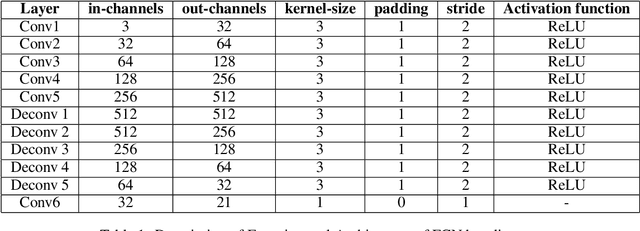
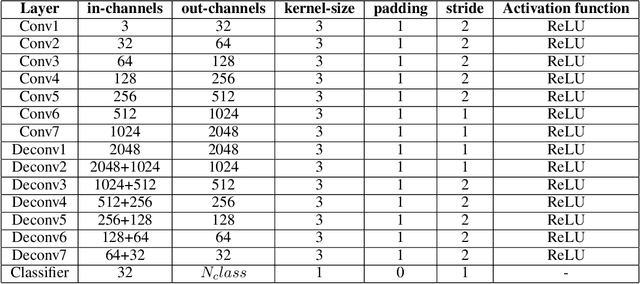
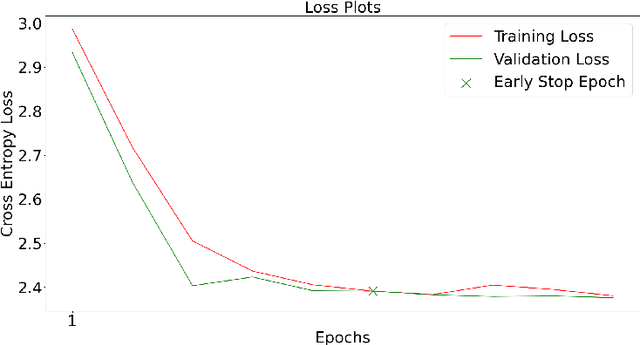
Abstract:In this paper, we present a comprehensive study on semantic segmentation with the Pascal VOC dataset. Here, we have to label each pixel with a class which in turn segments the entire image based on the objects/entities present. To tackle this, we firstly use a Fully Convolution Network (FCN) baseline which gave 71.31% pixel accuracy and 0.0527 mean IoU. We analyze its performance and working and subsequently address the issues in the baseline with three improvements: a) cosine annealing learning rate scheduler(pixel accuracy: 72.86%, IoU: 0.0529), b) data augmentation(pixel accuracy: 69.88%, IoU: 0.0585) c) class imbalance weights(pixel accuracy: 68.98%, IoU: 0.0596). Apart from these changes in training pipeline, we also explore three different architectures: a) Our proposed model -- Advanced FCN (pixel accuracy: 67.20%, IoU: 0.0602) b) Transfer Learning with ResNet (Best performance) (pixel accuracy: 71.33%, IoU: 0.0926 ) c) U-Net(pixel accuracy: 72.15%, IoU: 0.0649). We observe that the improvements help in greatly improving the performance, as reflected both, in metrics and segmentation maps. Interestingly, we observe that among the improvements, dataset augmentation has the greatest contribution. Also, note that transfer learning model performs the best on the pascal dataset. We analyse the performance of these using loss, accuracy and IoU plots along with segmentation maps, which help us draw valuable insights about the working of the models.
Speaker Recognition in the Wild
May 05, 2022
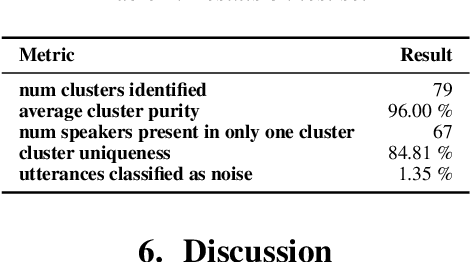
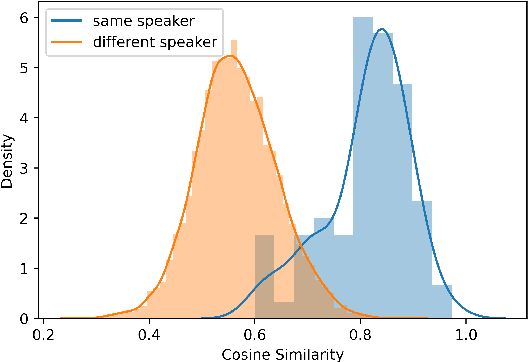
Abstract:In this paper, we propose a pipeline to find the number of speakers, as well as audios belonging to each of these now identified speakers in a source of audio data where number of speakers or speaker labels are not known a priori. We used this approach as a part of our Data Preparation pipeline for Speech Recognition in Indic Languages (https://github.com/Open-Speech-EkStep/vakyansh-wav2vec2-experimentation). To understand and evaluate the accuracy of our proposed pipeline, we introduce two metrics: Cluster Purity, and Cluster Uniqueness. Cluster Purity quantifies how "pure" a cluster is. Cluster Uniqueness, on the other hand, quantifies what percentage of clusters belong only to a single dominant speaker. We discuss more on these metrics in section \ref{sec:metrics}. Since we develop this utility to aid us in identifying data based on speaker IDs before training an Automatic Speech Recognition (ASR) model, and since most of this data takes considerable effort to scrape, we also conclude that 98\% of data gets mapped to the top 80\% of clusters (computed by removing any clusters with less than a fixed number of utterances -- we do this to get rid of some very small clusters and use this threshold as 30), in the test set chosen.
indic-punct: An automatic punctuation restoration and inverse text normalization framework for Indic languages
Mar 31, 2022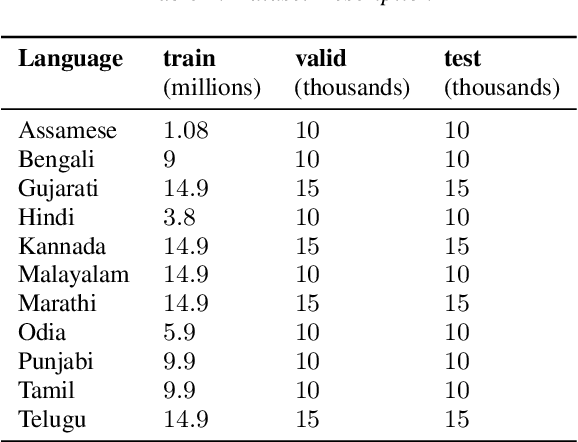
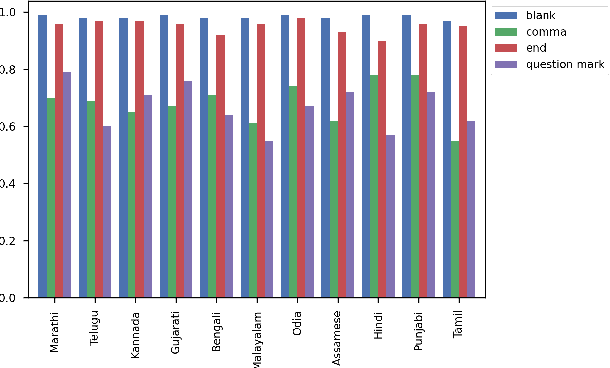
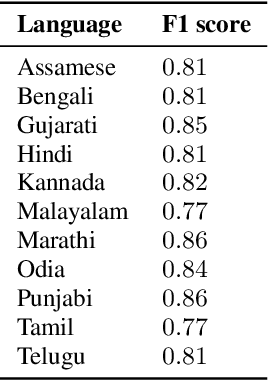
Abstract:Automatic Speech Recognition (ASR) generates text which is most of the times devoid of any punctuation. Absence of punctuation is text can affect readability. Also, down stream NLP tasks such as sentiment analysis, machine translation, greatly benefit by having punctuation and sentence boundary information. We present an approach for automatic punctuation of text using a pretrained IndicBERT model. Inverse text normalization is done by hand writing weighted finite state transducer (WFST) grammars. We have developed this tool for 11 Indic languages namely Hindi, Tamil, Telugu, Kannada, Gujarati, Marathi, Odia, Bengali, Assamese, Malayalam and Punjabi. All code and data is publicly. available
Effectiveness of text to speech pseudo labels for forced alignment and cross lingual pretrained models for low resource speech recognition
Mar 31, 2022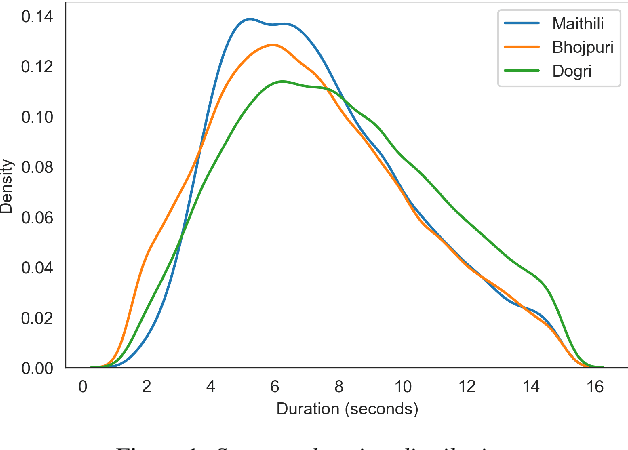
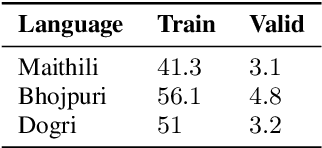
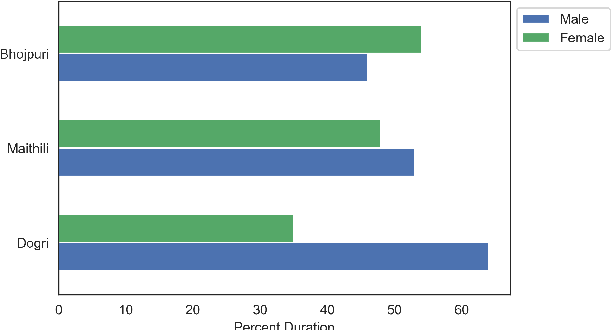
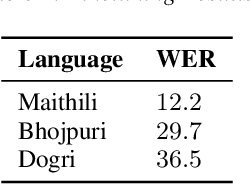
Abstract:In the recent years end to end (E2E) automatic speech recognition (ASR) systems have achieved promising results given sufficient resources. Even for languages where not a lot of labelled data is available, state of the art E2E ASR systems can be developed by pretraining on huge amounts of high resource languages and finetune on low resource languages. For a lot of low resource languages the current approaches are still challenging, since in many cases labelled data is not available in open domain. In this paper we present an approach to create labelled data for Maithili, Bhojpuri and Dogri by utilising pseudo labels from text to speech for forced alignment. The created data was inspected for quality and then further used to train a transformer based wav2vec 2.0 ASR model. All data and models are available in open domain.
Is Word Error Rate a good evaluation metric for Speech Recognition in Indic Languages?
Mar 30, 2022
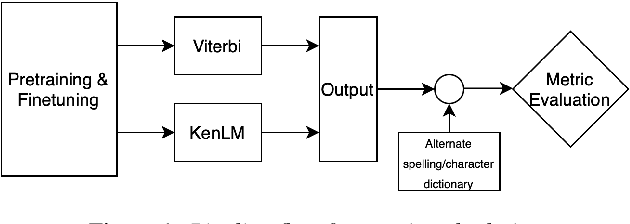


Abstract:We propose a new method for the calculation of error rates in Automatic Speech Recognition (ASR). This new metric is for languages that contain half characters and where the same character can be written in different forms. We implement our methodology in Hindi which is one of the main languages from Indic context and we think this approach is scalable to other similar languages containing a large character set. We call our metrics Alternate Word Error Rate (AWER) and Alternate Character Error Rate (ACER). We train our ASR models using wav2vec 2.0\cite{baevski2020wav2vec} for Indic languages. Additionally we use language models to improve our model performance. Our results show a significant improvement in analyzing the error rates at word and character level and the interpretability of the ASR system is improved upto $3$\% in AWER and $7$\% in ACER for Hindi. Our experiments suggest that in languages which have complex pronunciation, there are multiple ways of writing words without changing their meaning. In such cases AWER and ACER will be more useful rather than WER and CER as metrics. Furthermore, we open source a new benchmarking dataset of 21 hours for Hindi with the new metric scripts.
Improving Speech Recognition for Indic Languages using Language Model
Mar 30, 2022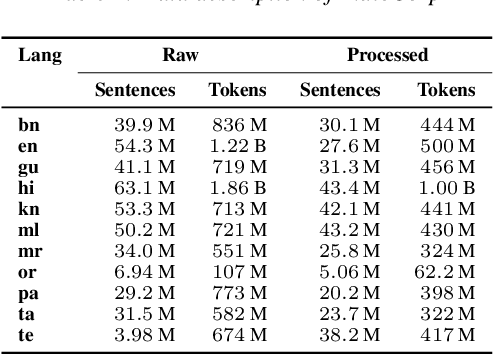

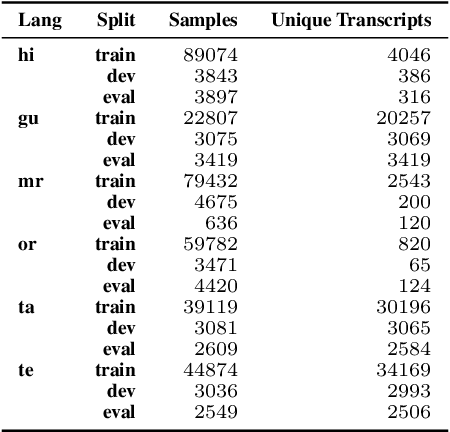
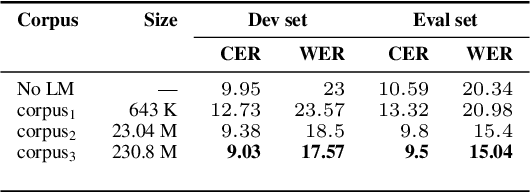
Abstract:We study the effect of applying a language model (LM) on the output of Automatic Speech Recognition (ASR) systems for Indic languages. We fine-tune wav2vec $2.0$ models for $18$ Indic languages and adjust the results with language models trained on text derived from a variety of sources. Our findings demonstrate that the average Character Error Rate (CER) decreases by over $28$ \% and the average Word Error Rate (WER) decreases by about $36$ \% after decoding with LM. We show that a large LM may not provide a substantial improvement as compared to a diverse one. We also demonstrate that high quality transcriptions can be obtained on domain-specific data without retraining the ASR model and show results on biomedical domain.
Code Switched and Code Mixed Speech Recognition for Indic languages
Mar 30, 2022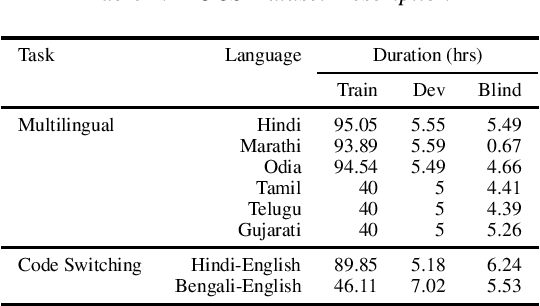

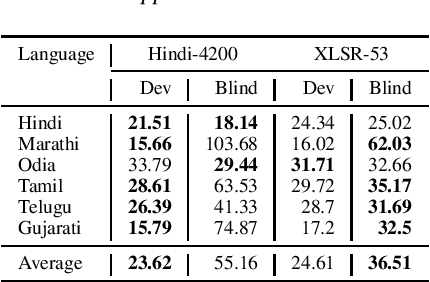
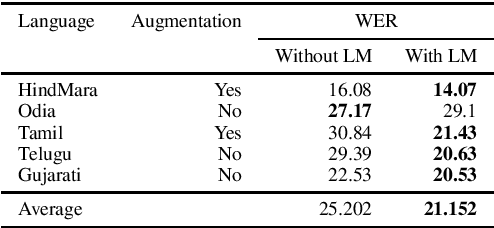
Abstract:Training multilingual automatic speech recognition (ASR) systems is challenging because acoustic and lexical information is typically language specific. Training multilingual system for Indic languages is even more tougher due to lack of open source datasets and results on different approaches. We compare the performance of end to end multilingual speech recognition system to the performance of monolingual models conditioned on language identification (LID). The decoding information from a multilingual model is used for language identification and then combined with monolingual models to get an improvement of 50% WER across languages. We also propose a similar technique to solve the Code Switched problem and achieve a WER of 21.77 and 28.27 over Hindi-English and Bengali-English respectively. Our work talks on how transformer based ASR especially wav2vec 2.0 can be applied in developing multilingual ASR and code switched ASR for Indic languages.
Vakyansh: ASR Toolkit for Low Resource Indic languages
Mar 30, 2022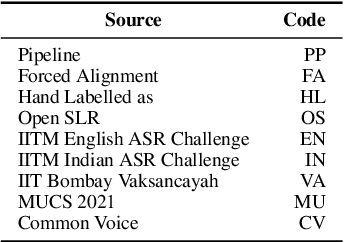

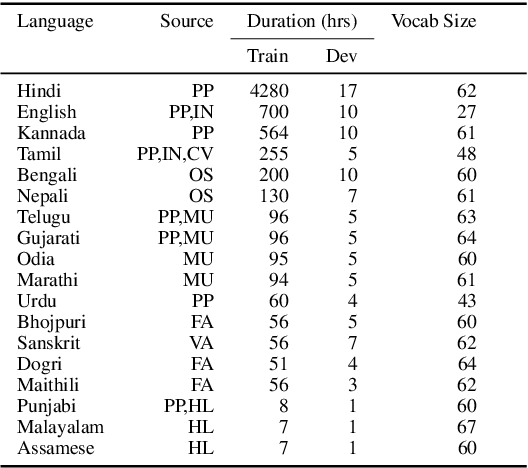

Abstract:We present Vakyansh, an end to end toolkit for Speech Recognition in Indic languages. India is home to almost 121 languages and around 125 crore speakers. Yet most of the languages are low resource in terms of data and pretrained models. Through Vakyansh, we introduce automatic data pipelines for data creation, model training, model evaluation and deployment. We create 14,000 hours of speech data in 23 Indic languages and train wav2vec 2.0 based pretrained models. These pretrained models are then finetuned to create state of the art speech recognition models for 18 Indic languages which are followed by language models and punctuation restoration models. We open source all these resources with a mission that this will inspire the speech community to develop speech first applications using our ASR models in Indic languages.
CLSRIL-23: Cross Lingual Speech Representations for Indic Languages
Jul 15, 2021
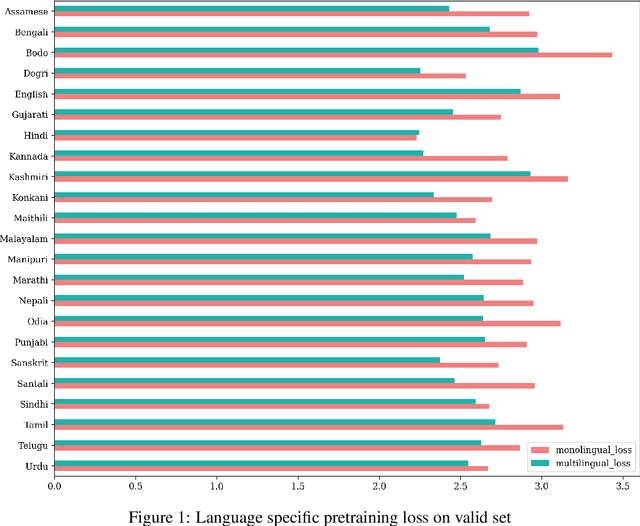
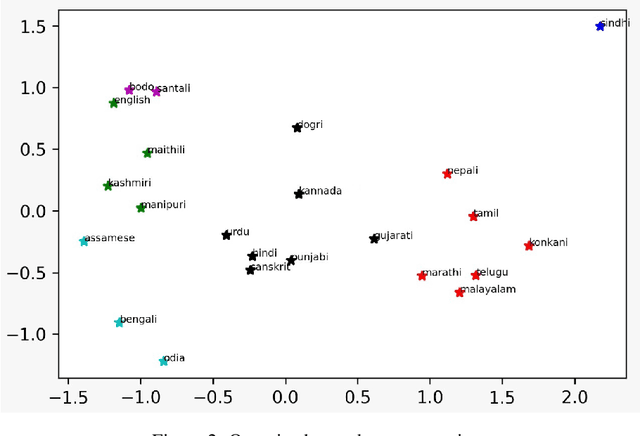

Abstract:We present a CLSRIL-23, a self supervised learning based audio pre-trained model which learns cross lingual speech representations from raw audio across 23 Indic languages. It is built on top of wav2vec 2.0 which is solved by training a contrastive task over masked latent speech representations and jointly learns the quantization of latents shared across all languages. We compare the language wise loss during pretraining to compare effects of monolingual and multilingual pretraining. Performance on some downstream fine-tuning tasks for speech recognition is also compared and our experiments show that multilingual pretraining outperforms monolingual training, in terms of learning speech representations which encodes phonetic similarity of languages and also in terms of performance on down stream tasks. A decrease of 5% is observed in WER and 9.5% in CER when a multilingual pretrained model is used for finetuning in Hindi. All the code models are also open sourced. CLSRIL-23 is a model trained on $23$ languages and almost 10,000 hours of audio data to facilitate research in speech recognition for Indic languages. We hope that new state of the art systems will be created using the self supervised approach, especially for low resources Indic languages.
 Add to Chrome
Add to Chrome Add to Firefox
Add to Firefox Add to Edge
Add to Edge